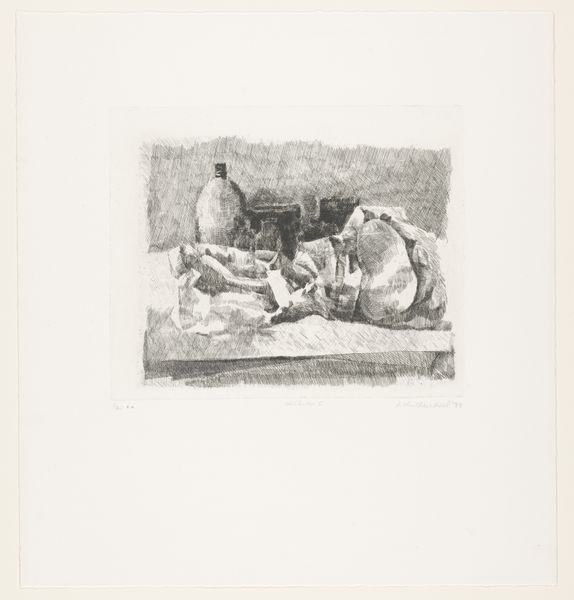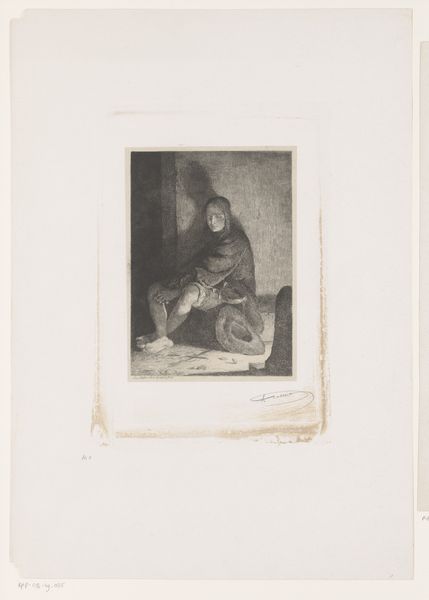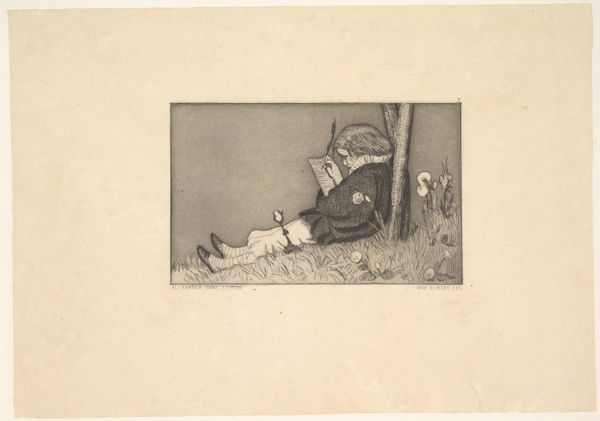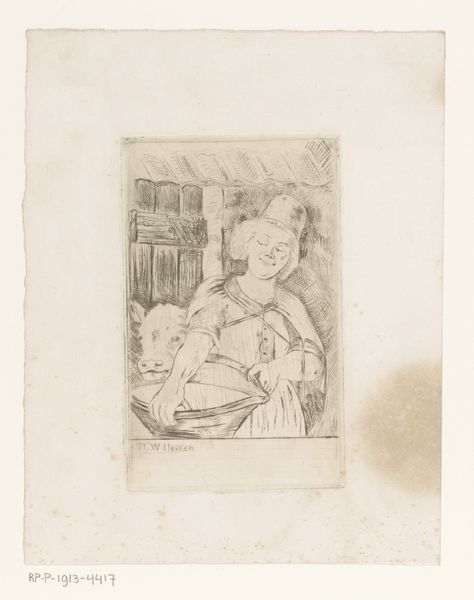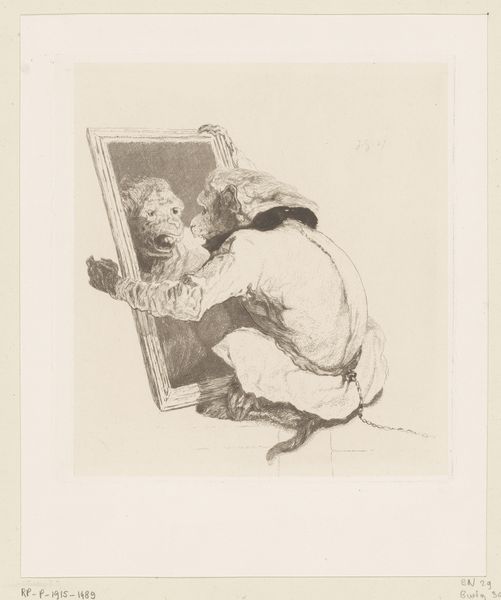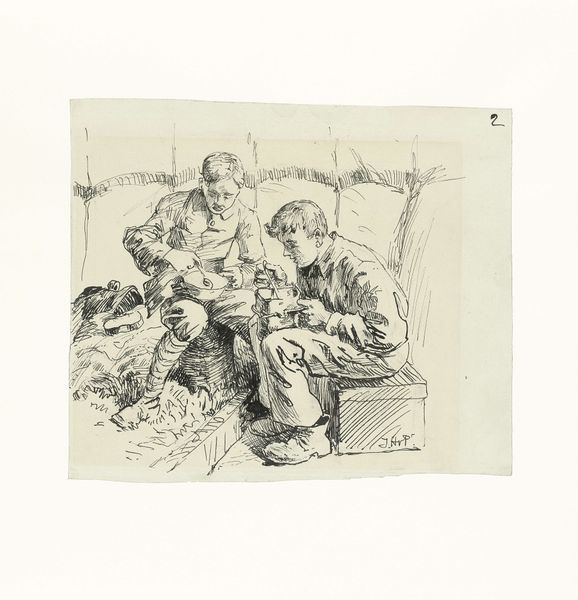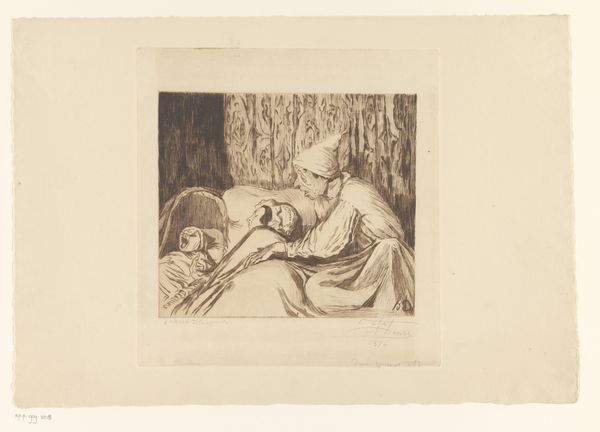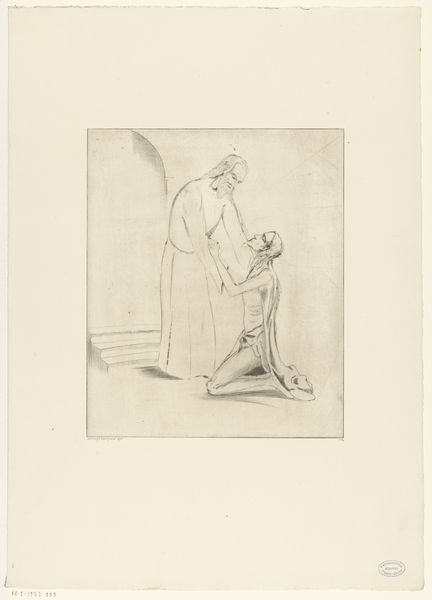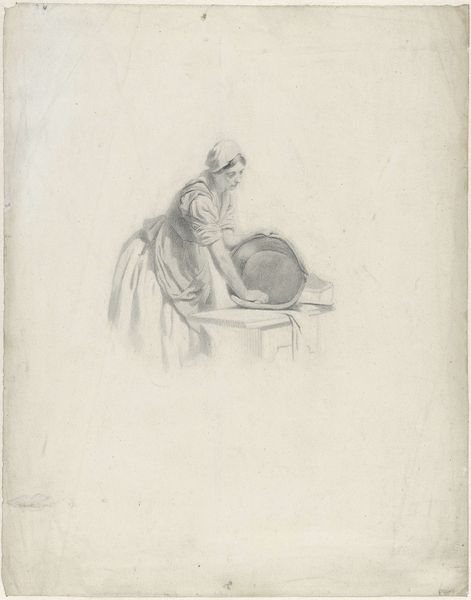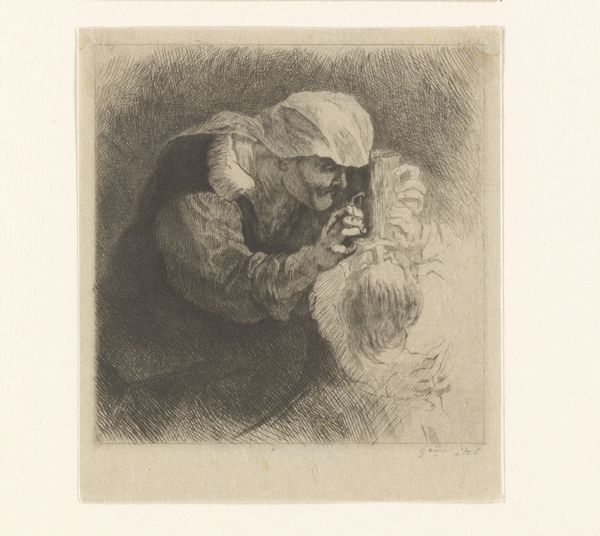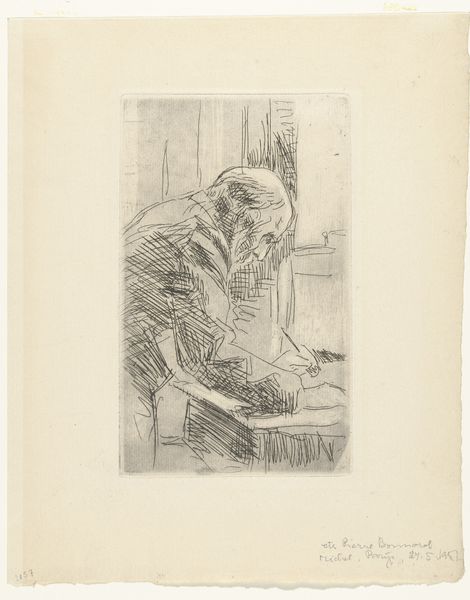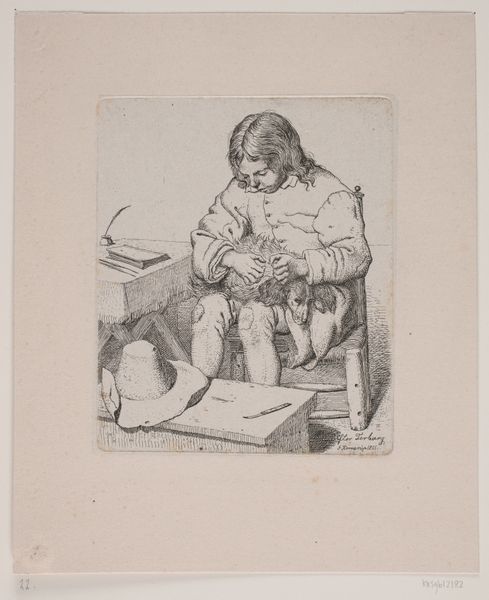
drawing, paper, pencil
#
portrait
#
drawing
#
neoclacissism
#
light pencil work
#
pencil sketch
#
paper
#
pencil
#
pencil work
#
genre-painting
Dimensions: height 188 mm, width 256 mm
Copyright: Rijks Museum: Open Domain
Editor: Here we have Pieter Christoffel Wonder's pencil drawing, "Tekenaar met slaapmuts op, werkend op een bank," dating from around 1790 to 1852. It depicts a man in what looks like a sleeping cap, working on a drawing while reclining. It gives me a cozy, intimate feeling, like peering into a private moment. How do you interpret this work? Curator: The intimacy you mention is key. But it also highlights the interiority of the artist himself. The sleep cap becomes less about rest and more about a kind of deliberate retreat from the world. Notice how the light catches the cap, almost like a halo. It elevates the act of creation, doesn’t it? Editor: I hadn’t considered that angle. The sleep cap felt so domestic. But now that you point it out, it does lend a certain gravitas. Curator: What symbols might Wonder be consciously or unconsciously invoking by portraying himself in this way? The image of the artist working in his private chamber, perhaps struggling with his craft, evokes a long line of similar portrayals across art history. Think of Saint Luke painting the Virgin Mary, for instance, connecting artistic creation with the sacred. Editor: So, is Wonder perhaps subtly placing himself within that tradition, hinting at the deeper significance of art making? Curator: Precisely. The "genre painting" theme is downplaying the self-importance, allowing Wonder to subtly insert himself. Editor: That connection between the domestic and the divine – that’s not something I would have picked up on initially. Thanks, it’s a different way to see the artwork. Curator: Yes. And thinking about this artist-as-sage theme enriches not just our understanding of Wonder, but how we consider other artists’ symbolic use of everyday settings and props.
Comments
No comments
Be the first to comment and join the conversation on the ultimate creative platform.
